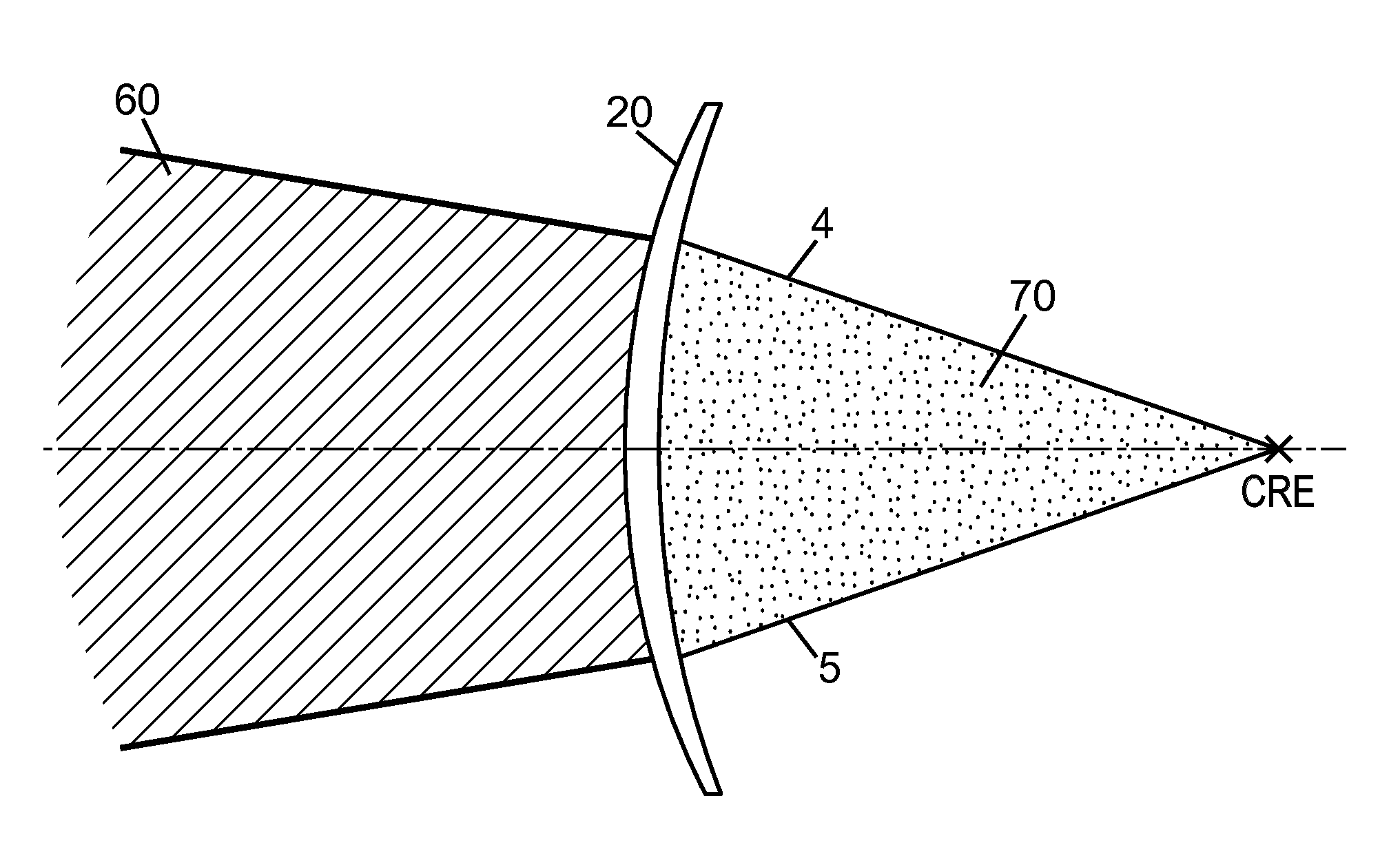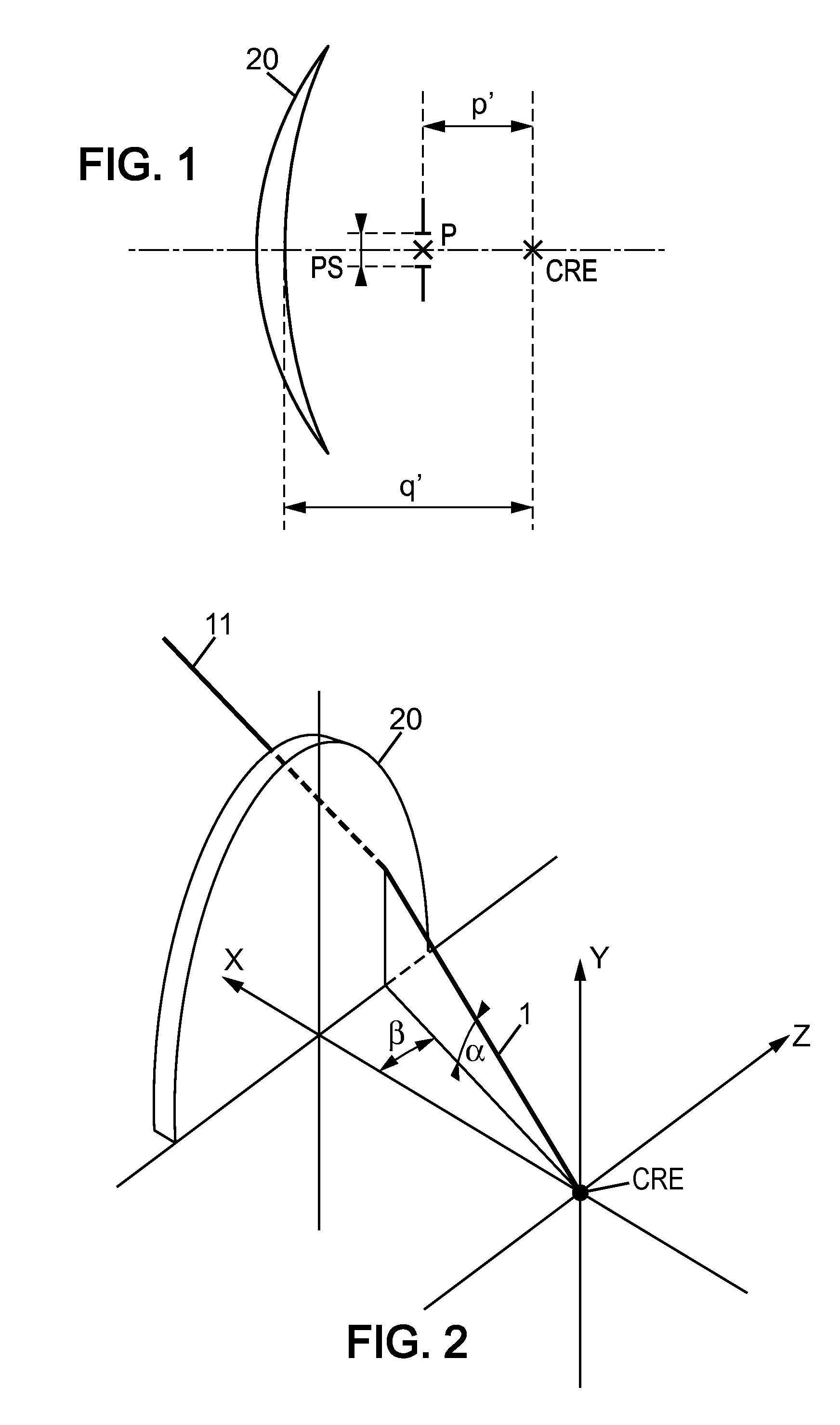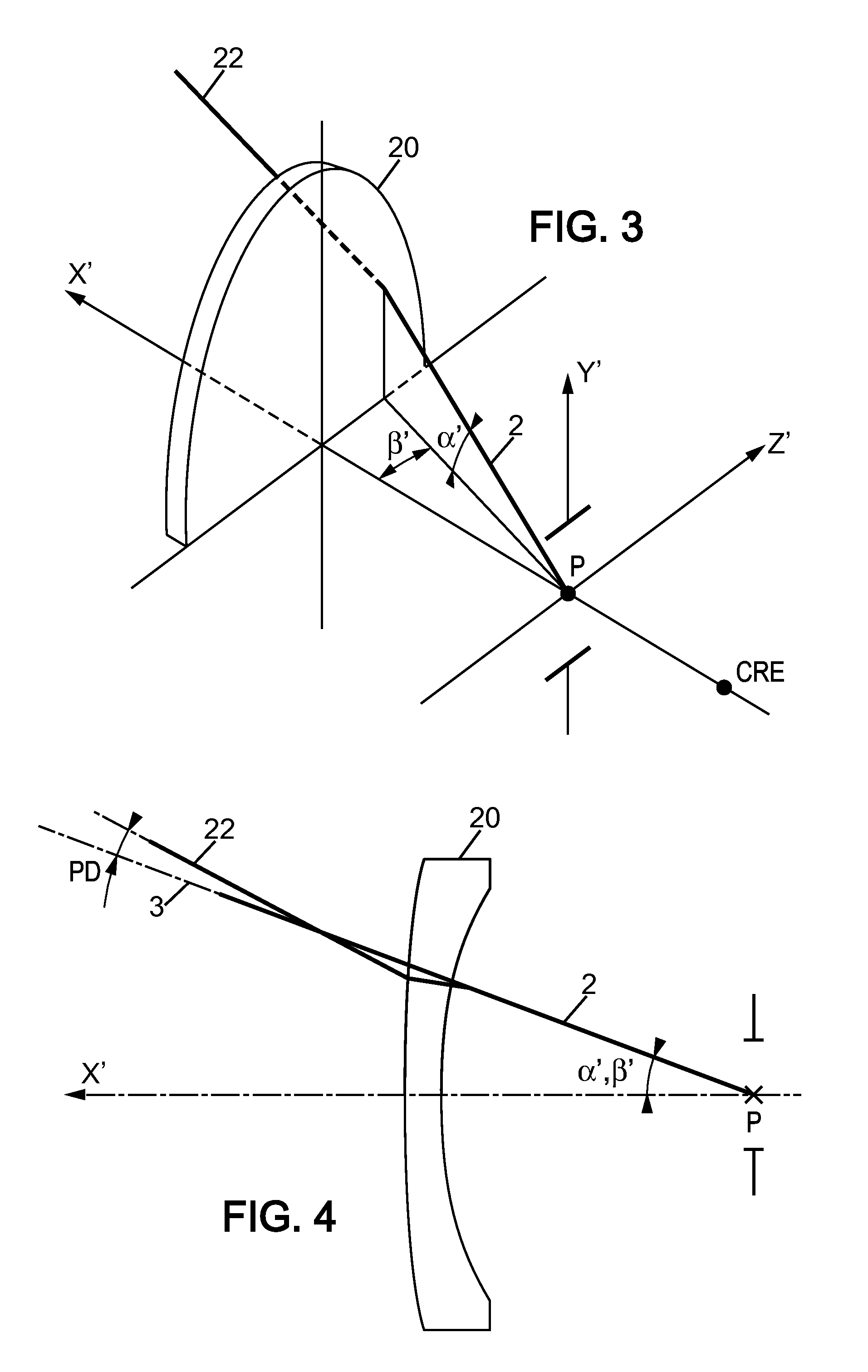Optical System Determination According to Advanced Criteria
a technology of optical system and advanced criteria, applied in optics, instruments, material analysis, etc., can solve the problems of unclear vision, limited number of criteria taken into account, and inability to answer all lens wearer needs, so as to achieve better optical system calculation
- Summary
- Abstract
- Description
- Claims
- Application Information
AI Technical Summary
Benefits of technology
Problems solved by technology
Method used
Image
Examples
Embodiment Construction
[0105]Skilled artisans appreciate that elements in the figures are illustrated for simplicity and clarity and have not necessarily been drawn to scale. For example, the dimensions of some of the elements in the figures may be exaggerated relative to other elements to help improve the understanding of the embodiments of the present invention.
[0106]We focus first on the criterion evaluation method according to the vision situation (central or peripheral). In order to compute a criterion, ray tracing software can be used. Ray tracing has special features according to the model of the lens-plus-eye system.
[0107]FIG. 1 illustrates a schematic view of a lens-plus-eye system. Referring to FIG. 1, an eye position can be defined by the center of rotation of the eye CRE and the entrance pupil central point P. PS is the pupil size (not drawn to scale). The distance q′ between the CRE and the lens 20 is generally, but not limited to, set to 25.5 mm, and p′ defines the position of the eye entran...
PUM
 Login to View More
Login to View More Abstract
Description
Claims
Application Information
 Login to View More
Login to View More - R&D
- Intellectual Property
- Life Sciences
- Materials
- Tech Scout
- Unparalleled Data Quality
- Higher Quality Content
- 60% Fewer Hallucinations
Browse by: Latest US Patents, China's latest patents, Technical Efficacy Thesaurus, Application Domain, Technology Topic, Popular Technical Reports.
© 2025 PatSnap. All rights reserved.Legal|Privacy policy|Modern Slavery Act Transparency Statement|Sitemap|About US| Contact US: help@patsnap.com



